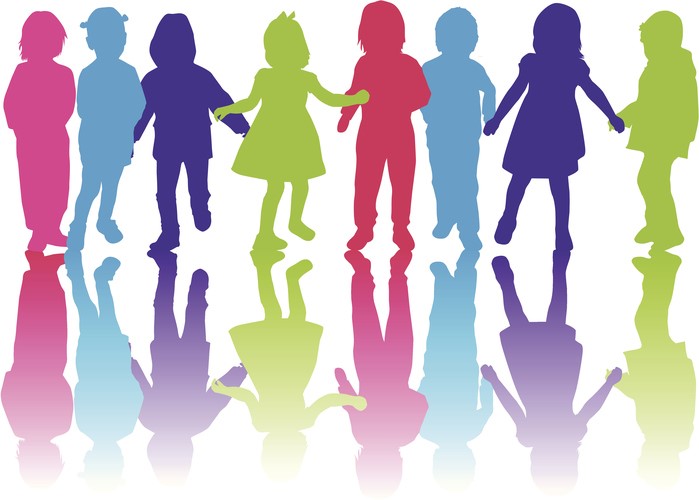Magazine, Living Well, Jennifer Crumpley, LCSW-R
Children do not come to school as blank slates, simply ready to open up to the lessons and subjects that are intended for them. From the earliest grades through high school, life experiences are always present, and many of these experiences are daunting. (Crumpley & Moore, 2016).
These life experiences often prove to be emotional stressors for children. Many of them are traumatizing. They include:
· Physical abuse
· Sexual abuse
· Emotional neglect
· Nutritional neglect
· Loss and bereavement
· Bullying
· Peer pressure
· Family problems
· Witness to domestic violence
· Foster care placement
· Alcohol and substance use
· Immigration
· Poverty
· Homelessness
· Gangs
· Developmental disability
· Addictive social media behavior
· Involvement with child welfare, juvenile justice, and other agencies.
COVID-19, sheltering-in, and the protests in cities across the nation have added, immeasurably, to these emotional stressors. They have, undoubtedly, left scars on the psyche of our children. We have to begin to heal the scars with programs that address students’ emotional and social problems. What better way to do that than with school-based mental health programs?
Now is the time to prepare for when brick-and-mortar schools reopen, in order to help children heal from their emotional pain. Schools can do this by offering services provided by school-based mental health professionals from various disciplines who will provide regular and ongoing therapeutic counseling. These services include, but are not limited to, mental health
status and psychosocial assessments, individual weekly therapy, group therapy, crisis intervention, in-classroom sessions, non-special education psychological testing, meetings with family members and caregivers, professional development for teachers, and collaborative efforts with existing school-based support services.
Children are likely to bring unexpressed feelings into the classroom. These feelings often get acted-out in age-inappropriate ways. Some of these behaviors, to name a few, are negative attention-seeking behavior, conflicts with peers, oppositional behavior, or withdrawal. This can result in disruptive behavior in the classroom. As any teacher knows, it takes only one student to disrupt a classroom and to claim the attention of a teacher, making it difficult for her to teach and for students to learn. This can become an untenable situation when there are two or more disruptive children in a classroom.
School-based mental health services will provide a space for children to be listened to, and for them to gain age-appropriate coping and problem-solving skills. As one digs deep into the underlying issues causing emotional stress in this climate of COVID-19 and social unrest, the list goes on and on.
Children have become increasingly worried about the effect of COVID-19. “Will my family get sick?” “Will I get sick?” “Why are they going to the hospital?” “Why can’t I visit? “Will they die?” “Will I die?” “Why are people wearing masks?” “Where is my mask?” “Why aren’t you wearing a mask?” “Why do some people wear masks and others don’t?”
Some children and youth have been placed in the unfortunate position of having to take care of parents suffering from COVID-19 or have, themselves, suffered from it. Some have suffered the death of a loved one or know of someone who has died. Many children are coping with unresolved issues related to loss and bereavement because of lack of understanding and attention paid to their grief.
School closings and sheltering-in have left children ill-prepared for prolonged separations from teachers, classmates, and friends. Being isolated from friends and family members has likely been a source of sadness, anxiety, and depression. Add to this the confusion about when brick-and-mortar schools will reopen. If and when schools reopen, children will need to adjust to social distancing and proper hygiene rules as well as settle down to a classroom setting after being home-schooled for months.
Home-schooling has not always been effective. Parents, caregivers, and even teachers have found it challenging to home-school. Parents who work from home have divided their time and attention between their employment and children. There have been obstacles to home-schooling, such as the lack of computer equipment, or Wi-Fi access. There are households where siblings have had to share one piece of electronic equipment. Some households lack the Internet, possibly due to the inability to pay the bill. Parents and caregivers have had to pay attention to the schoolwork of children in differing grades. Online learning entails having to compete for attention in online classrooms. Some children are being home-schooled by grandparents who have stepped in for parents who cannot afford daycare. Special needs students and students with non-native English-speaking parents have experienced additional struggles. Teachers are not always as responsive to children as they might have been in a school setting where a student can more easily seek out a teacher for individual attention. All of these matters have resulted in many children falling behind academically, which adds to their stress.
Children living in apartment settings in urban areas often do not have a backyard or outside play area to use. Children and youth have missed traditional moving-up and graduation ceremonies, school proms, in-school end-of-year celebrations, birthday parties, religious ceremonies and events, family gatherings, vacations, and a host of special events. They no longer attend church, mosque, synagogue, or other houses of worship.
There are children and youth who have been traumatized by sheltering-in with physically and/or sexually abusive parents, relatives, siblings, and other caregivers. They have been witness to marital discord to the extent of domestic violence. They have suffered increased tension in the household, and lack of attention and nurturance. They have seen caregivers cry, and scream more often. They’ve witnessed adults use alcohol or drugs excessively. Children are experiencing sleep difficulties; have seen a dead body carried out of a building; frequently hear fire engines and ambulances; wait in line for food for hours; view scenes on t.v. or other media showing police brutality, tear gassing, rubber pellets, riots, and looting. On the other hand, they likely have questions about peaceful protests, policing policies, and civil rights actions.
In addition to the above-named underlying issues to the emotional stressors in children’s lives in the wake of the pandemic and protests, there are questions to be addressed as follows:
· What are children being told about COVID-19?
· Children and youth at suicidal risk: who are they talking to? Are they in therapy? Are they continuing existing therapy? Are they in need of medication? Are they continuing to take already prescribed medication?
· Are children getting access to needed medical care?
· Children in foster care placement: are they receiving their supervised visits with family members? Are they being released to biological family members as planned?
· Are parents’ and caregivers’ worries being passed to children? For example, is it safe to return to school in the absence of a vaccine? What about the Kawasaki-like syndrome spreading amongst children who have had COVID-19?
Now is the time for schools to plan for school-based mental health services provided by licensed mental health professionals. These services will help students adjust to the new demands of the school setting, develop coping strategies, problem-solve, and have someone listen to their concerns in a safe and confidential manner.
For the benefit of the child’s emotional, social, cognitive, and spiritual wellbeing, we need mental health programs and services in schools.
Submitted by Jennifer Crumpley, LCSW-R
Author, Reaching Our Neediest Children: Bringing a Mental Health Program Into the Schools.









